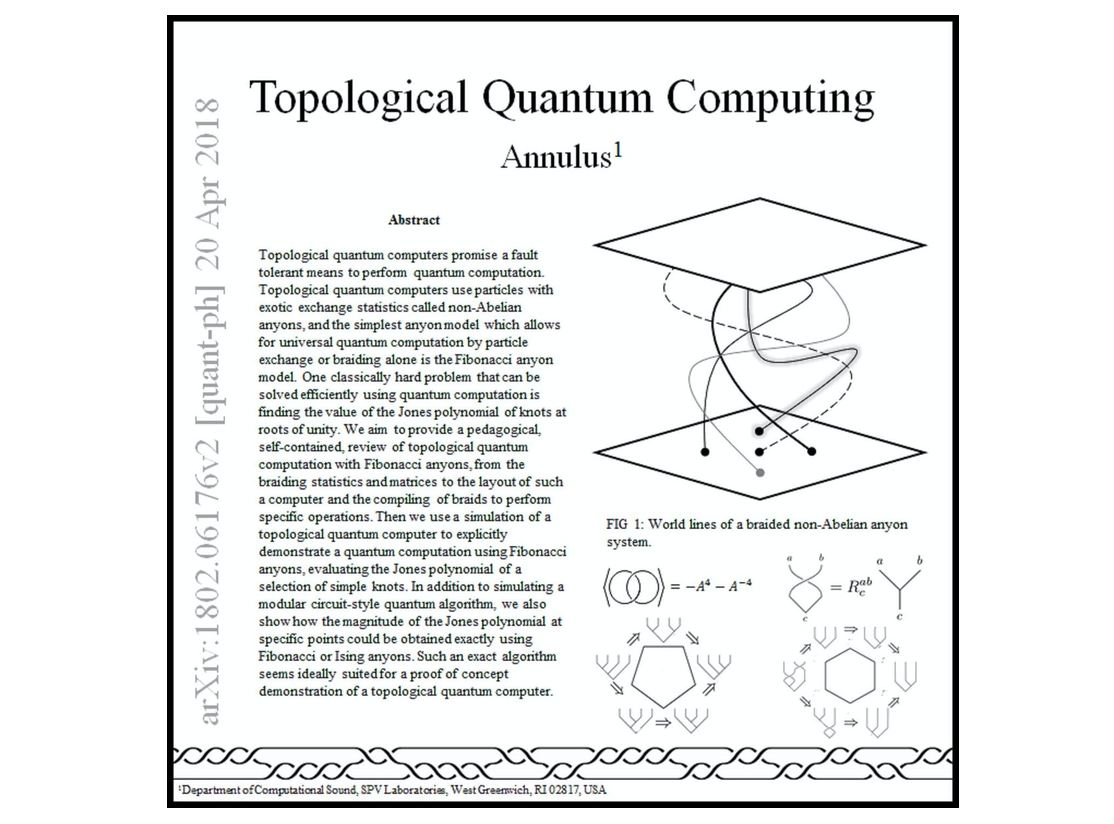Topological quantum computing represents a confluence of advanced concepts from topology, quantum mechanics, and computer science. As we delve into the terminology of this fascinating field, we will explore the specific lexicon that underpins both the theoretical framework and practical applications of topological quantum computing. This exploration will illuminate the intricacies and subtleties that characterize this interdisciplinary domain, fostering a deeper appreciation for the phenomena at play.
At the heart of topological quantum computing lies the term qubit. A qubit, or quantum bit, serves as the fundamental unit of quantum information. Unlike a classical bit, which can exist solely in a state of 0 or 1, a qubit can inhabit a superposition of states, allowing it to simultaneously represent both 0 and 1. This property enables quantum computers to perform complex calculations at exponentially faster rates than classical counterparts.
Moving from the basic unit of information to broader constructs, we encounter topology—the mathematical study of shapes and spaces. In topology, we are less concerned with exact measurements and more with the inherent properties that remain unchanged under continuous transformations, such as stretching or bending. This abstract view is crucial in understanding how entanglement and braiding of anyonic excitations contribute to quantum information processing.
Anyons represent a class of particles that exist in two dimensions, distinguished from mere fermions and bosons that inhabit three-dimensional space. What sets anyons apart is their unique statistical behavior, particularly in terms of braiding. When anyons are moved around one another in a two-dimensional plane, they can undergo braiding operations that alter their quantum state. This braiding is pivotal in topological quantum computing, as it allows for the creation of robust quantum states that are less susceptible to local noise and decoherence.
Central to the execution of topological quantum computing is the notion of topological order. This concept refers to a phase of matter that exhibits non-local entanglement patterns and can sustain quantum information in a fault-tolerant manner. Topological order differs fundamentally from conventional symmetry-breaking orders, as it is characterized by excitations that cannot be described through local order parameters. The resilience of topologically ordered states is a critical factor in achieving reliable quantum computation.
Within the context of topological quantum computing, we often encounter the term non-Abelian statistics. In contrast to familiar Abelian particles, which behave according to classical statistics (such as bosons), non-Abelian anyons possess a richer structure that allows for different ways of exchanging or manipulating these particles. This non-Abelian property enables entangled quantum states of a system to be manipulated in ways that traditional particles cannot achieve, making it a cornerstone of fault-tolerant quantum computation.
The execution of quantum algorithms using these principles brings us to the idea of quantum gates. Quantum gates are the processors of quantum computation, analogous to classical logic gates but operating under the laws of quantum mechanics. In appealing to topological phenomena, these gates may be implemented through braiding operations of anyons, resulting in operations that are inherently protected from certain types of errors, thus providing a pathway to robust quantum computing.
Another significant term in this discourse is quantum coherence. Coherence refers to the preservation of quantum states over time, a necessary condition for the successful operation of quantum algorithms. Topological quantum bits inherently exhibit enhanced coherence properties due to their topological nature, which protects them against localized disturbances. This is an essential consideration as quantum systems are susceptible to decoherence, which can degrade computational fidelity.
Moreover, the quantum measurement problem serves as a philosophical underpinning for discussions surrounding the implications of topological quantum computing. The act of measurement in quantum mechanics collapses a superposition into a definite state, raising questions about the nature of reality at the quantum level. Topological quantum computing, by virtue of its foundations, challenges conventional paradigms of measurement and could shed light on deeper understandings of quantum states and their implications.
A particularly compelling concept within this vernacular is the topological quantum field theory (TQFT), which offers a mathematical framework to relate topology and quantum physics. TQFTs serve as models for understanding the behavior of anyonic excitations and their braiding properties, providing a theoretical scaffold for the realization of topological quantum computers.
Furthermore, one must also consider fault tolerance in the realm of topological quantum computing. Tolerance to errors is a significant hurdle in the implementation of any quantum computation. Topological properties provide an avenue for achieving fault-tolerant logical operations, where the encoding of information within the global topology of the system means that errors affecting local states have a negligible effect on the overall system.
In summary, the intricate lexicon of topological quantum computing encompasses a range of concepts from qubits and anyons to topological order and coherence. Each term contributes to a cohesive understanding of a domain that balances the principles of mathematics, physics, and computer science. As researchers delve into this rich tapestry of ideas, they not only unravel the intricacies of quantum computation but also ignite a passion for the underlying phenomena that challenge our intuition and expand our grasp of the universe’s fundamental nature. The allure of topological quantum computing lies not just in its potential capabilities but also in its promise to reshape our conceptual frameworks and deliver transformative advancements in computation and beyond.












